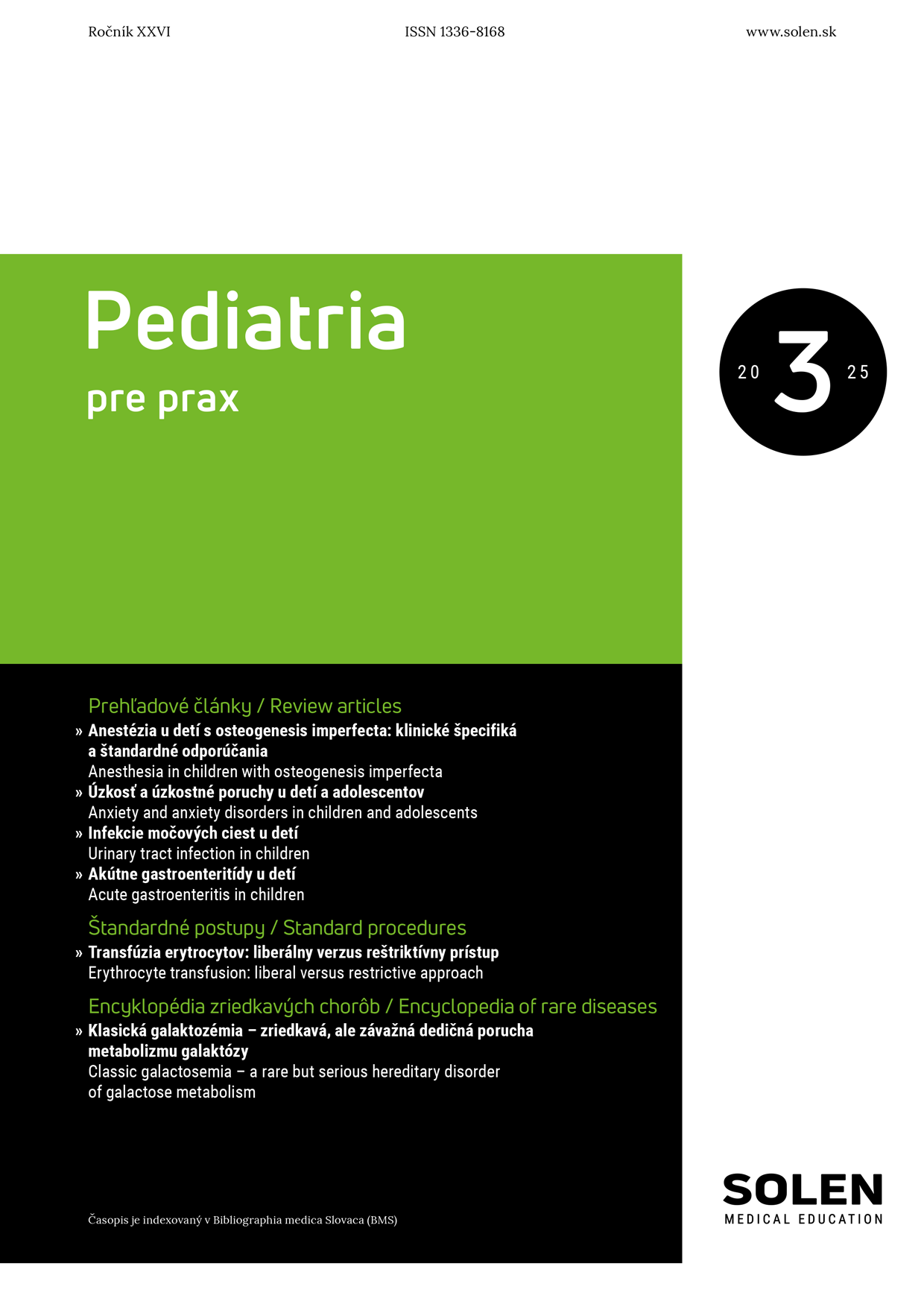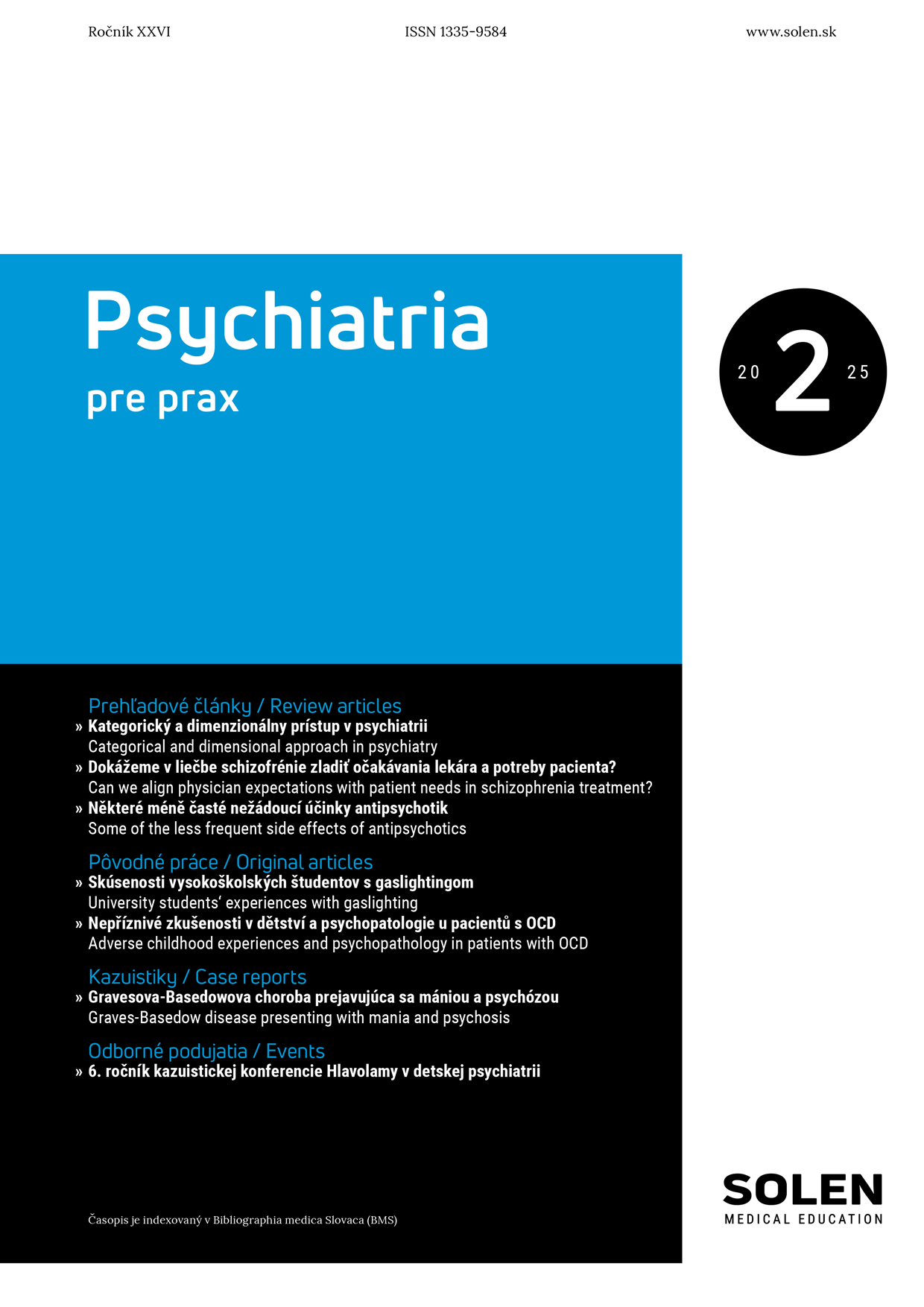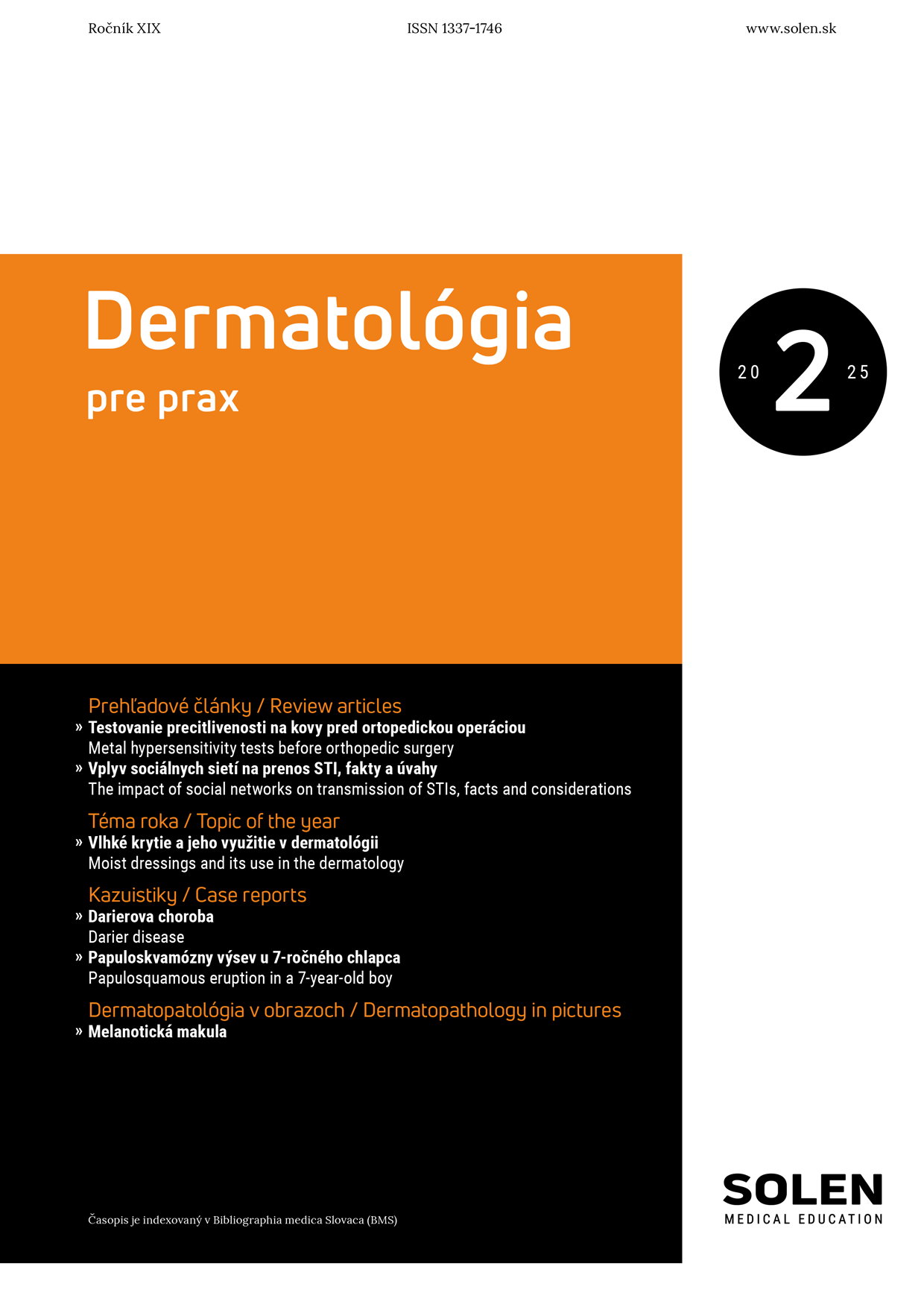Pediatria pre prax 6/2015
Gastroschíza, ne úplně jednoduchá diagnóza u novorozence
MUDr. Kateřina Konopásková, MUDr. Alena Kokešová, Ph.D, MUDr. Dagmar Heroldová, MUDr. Mahulena Mojžíšová, doc. MUDr. Michal Rygl, Ph.D.
Gastroschíza patří mezi velmi časté vrozené vady, svojí incidencí (1 : 5 800) by defekty břišní stěny měly být pro dětského chirurga 2× častější než například atrézie jícnu. Gastroschíza nebývá spojena s výskytem chromozomálních a strukturálních malformací s výjimkou intestinálních atrézií. Vlastní plastika defektu bývá jednodušší než u omfalokély. U rozsáhlých gastroschíz preferujeme nenásilnou repozici střevních kliček a vícedobý uzávěr defektu (silo technika, syntetická záplata). Léčebným problémem zůstává obnovení plné funkce prenatálně poškozeného střeva a převedení na plný perorální příjem. Prezentujeme kazuistiku novorozence s gastroschízou, který byl u nás hospitalizován.
Kľúčové slová: gastroschíza, kazuistika.
Gastroschisis: not quite easy to diagnose in a newborn
Gastroschisis is a very frequent congenital defect. Given their incidence (that of 1 : 5,800), abdominal wall defects should be twice as common for the pediatric surgeon than, for example, esophageal atresia. Gastroschisis is usually not associated with the presence of chromosomal and structural malformations, except for intestinal atresias. Plastic closure of the defect tends to be easier than in omphalocele. In large gastroschisis, a nonviolent reduction of bowel loops and a multistage defect closure (the silo technique, a synthetic patch) are preferred. Complete functional recovery of a prenatally damaged intestine and transition to full oral intake remains a therapeutic challenge. We present a case report of a newborn with gastroschisis hospitalized at our facility.
Keywords: gastroschisis, case report.

















